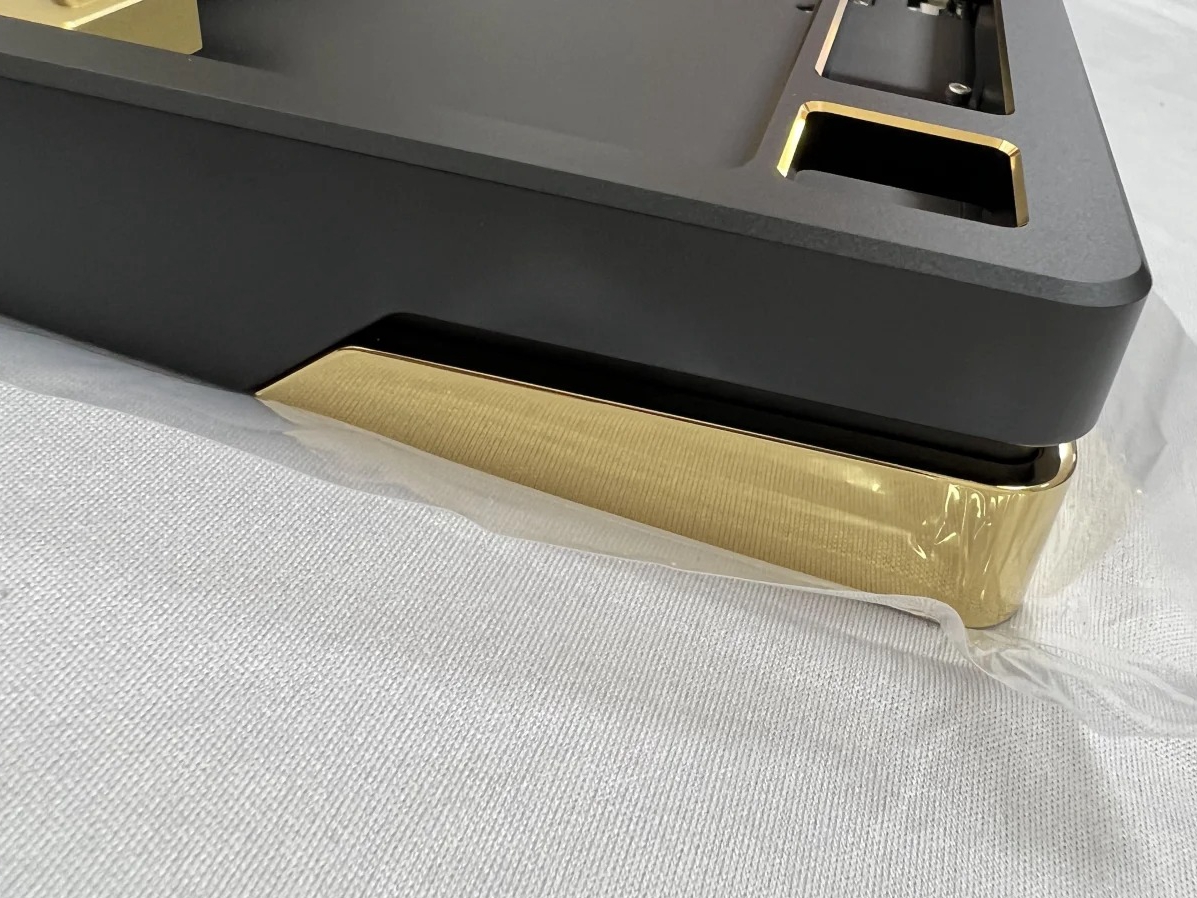PVD Coatings: Enhancing CNC Parts with Durability and Aesthetics
Introduction
Physical Vapor Deposition (PVD) coatings involve applying thin, durable films onto CNC-machined components using vacuum-based processes such as sputtering or cathodic arc deposition. With typical coating thicknesses between 1–10 μm, PVD significantly enhances durability by increasing surface hardness (up to HV 4000), reducing friction, and improving corrosion resistance. Additionally, it offers superior aesthetic benefits, providing uniform metallic finishes and customizable colors ideal for high-end applications.
Widely utilized in industries such as automotive, medical devices, aerospace, and consumer electronics, PVD coatings effectively complement precision-machined materials, including stainless steel, titanium alloys, and engineering ceramics. They provide uniform coverage of intricate geometries, threads, sharp edges, and fine features, enabling manufacturers to deliver visually appealing, wear-resistant components that meet rigorous performance and regulatory standards.
PVD Coatings: Enhancing CNC Parts with Durability and Aesthetics
Scientific Principles & Industrial Standards
Definition:
Physical Vapor Deposition (PVD) is a vacuum coating technique involving vaporizing solid materials in a vacuum environment, depositing thin protective and decorative films onto component surfaces. Typical film thickness ranges from 1–10 μm, significantly improving durability, wear resistance, and visual appeal.
Governing Standards:
ASTM B571: Adhesion testing of metallic coatings
ISO 9227: Corrosion tests in artificial atmospheres (salt spray tests)
ASTM G99: Standard test method for wear testing (pin-on-disk)
Process Function and Cases
Performance Dimension | Technical Parameters | Application Cases |
|---|---|---|
Wear Resistance | Surface hardness HV 2000–4000 | Cutting tools, automotive components, injection molds |
Corrosion Resistance | 1000–2000 hr salt spray resistance (ISO 9227) | Surgical instruments, marine hardware, valve components |
Decorative Appeal | Uniform metallic finishes, customizable colors | Luxury watch cases, high-end consumer electronics |
Friction Reduction | Coefficient of friction as low as 0.1–0.2 | Automotive engine components, aerospace fasteners |
Surface Finish Classification
Technical Specification Matrix
PVD Coating Method | Key Parameters & Metrics | Advantages | Limitations |
|---|---|---|---|
Thickness: 1–5 μm; Hardness: HV 2000–3500 | Uniform coverage, versatile film properties | Relatively lower deposition rate | |
Cathodic Arc Deposition | Thickness: 2–10 μm; Hardness: HV 2500–4000 | Excellent adhesion, very high hardness | Potential for surface droplets ("macros") |
Electron Beam Evaporation | Thickness: 1–3 μm; Adhesion strength >80 MPa | Precise thickness control, high purity coatings | Limited to line-of-sight areas |
Ion Plating | Thickness: 2–8 μm; Corrosion resistance >1500 hr | Strong bonding, excellent decorative quality | Higher processing temperatures |
Magnetron Sputtering | Thickness: 1–6 μm; Low friction coefficient (<0.2) | Superior uniformity, fine coating control | Slower cycle times |
Selection Criteria & Optimization Guidelines
Sputtering
Selection Criteria: Ideal for high-precision components requiring uniform coating, moderate thickness, and excellent aesthetics.
Optimization Guidelines: Control sputtering gas composition (Ar/N₂ ratio), adjust magnetron target power (1–5 kW), maintain substrate temperatures (150–300°C) for optimal adhesion and performance.
Cathodic Arc Deposition
Selection Criteria: Suitable for components demanding extremely hard, wear-resistant coatings and strong adhesion, such as cutting tools or engine parts.
Optimization Guidelines: Optimize arc current settings (50–200 A), utilize macro-particle filtering systems, control substrate bias voltage (-50 to -200 V) for improved coating quality and reduced defects.
Electron Beam Evaporation
Selection Criteria: Best for precision optics, thin decorative films, and applications requiring high purity and precisely controlled thickness.
Optimization Guidelines: Precisely regulate electron beam intensity, maintain stable vacuum pressure (<1×10⁻⁵ torr), and use rotation fixtures for uniform coating distribution.
Ion Plating
Selection Criteria: Recommended for decorative applications and corrosion-resistant coatings with strong bonding characteristics.
Optimization Guidelines: Maintain substrate temperature (300–450°C), carefully control ion bombardment energy (50–150 eV), and implement multi-layer deposition for enhanced corrosion resistance.
Magnetron Sputtering
Selection Criteria: Preferred for high-performance automotive and aerospace components requiring fine, uniform coatings with low friction properties.
Optimization Guidelines: Precisely adjust magnetron power (2–8 kW), optimize gas flow and pressure (0.5–5 mTorr), and utilize substrate rotation fixtures to achieve consistent thickness.
Material-Finish Compatibility Chart
Substrate Category | Recommended PVD Method | Performance Gain | Industrial Validation Data |
|---|---|---|---|
Cathodic Arc Deposition | Hardness HV 3000–3500; corrosion resistance >1500 hr | Medical tools tested per ISO 10993, ASTM B571 | |
Ion Plating | Increased wear resistance; friction coefficient ~0.2 | Aerospace fasteners verified per AMS 2488 standard | |
Magnetron Sputtering | Enhanced decorative finish; improved wear performance | Consumer electronics evaluated per ASTM G99 | |
Electron Beam Evaporation | Precise optical quality finish; uniform film thickness | Optical components tested per ISO 9211 standards | |
Cathodic Arc Deposition | HV 3500–4000 hardness; excellent adhesion (>90 MPa) | Cutting tools validated with ASTM G99 wear tests |
PVD Coating Process Control: Critical Steps & Standards
Pre-Coating Essentials
Ultrasonic Cleaning: Removal of surface contaminants (ISO 8501-1 cleanliness standards).
Surface Preparation: Ion bombardment pre-cleaning to achieve optimal surface activation (ASTM B571 compliance).
Fixture and Masking: Precision masking techniques for selective deposition (ISO 14644 cleanroom standards).
Coating Process Controls
Thickness Monitoring: Real-time quartz crystal microbalance (QCM) control (±5% thickness accuracy).
Temperature Regulation: Precise substrate heating control (±5°C accuracy).
Vacuum Stability: High vacuum (10⁻⁶ torr) maintained for consistent coating quality.
Post-Coating Checks
Adhesion Strength: Scratch and tape adhesion tests (ASTM B571).
Wear Resistance Testing: Pin-on-disk friction and wear evaluations (ASTM G99).
Corrosion Resistance: Salt spray chamber testing (ISO 9227).
FAQs
What advantages do PVD coatings have over traditional plating or anodizing?
How durable are PVD-coated CNC parts in high-wear or corrosive environments?
Can PVD coatings be customized in color and finish?
What is the typical thickness range for PVD coatings on precision CNC components?
What materials are best suited for PVD coating applications?

